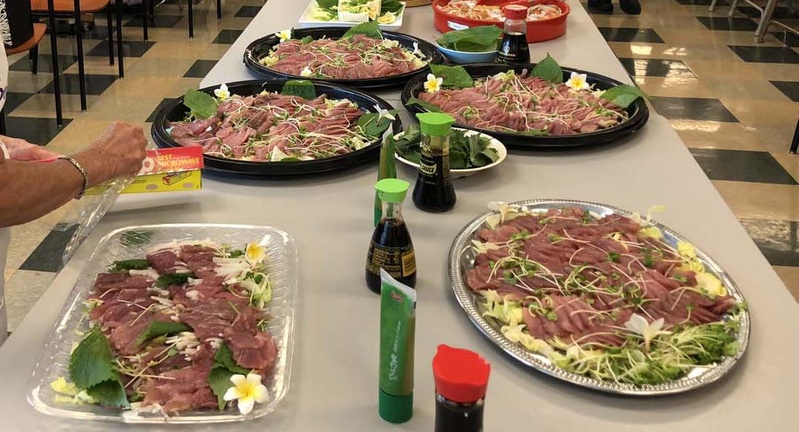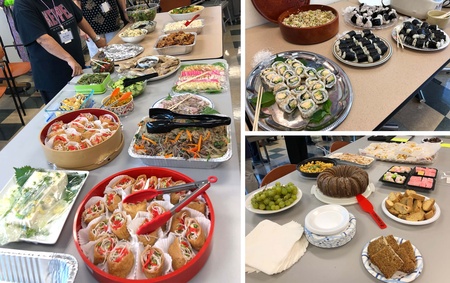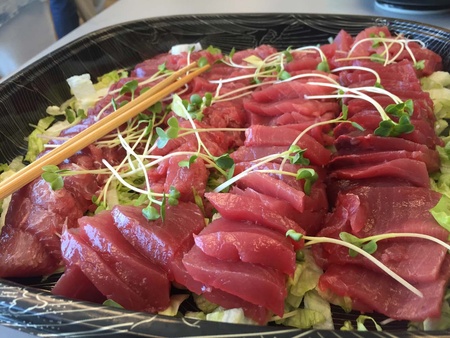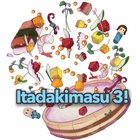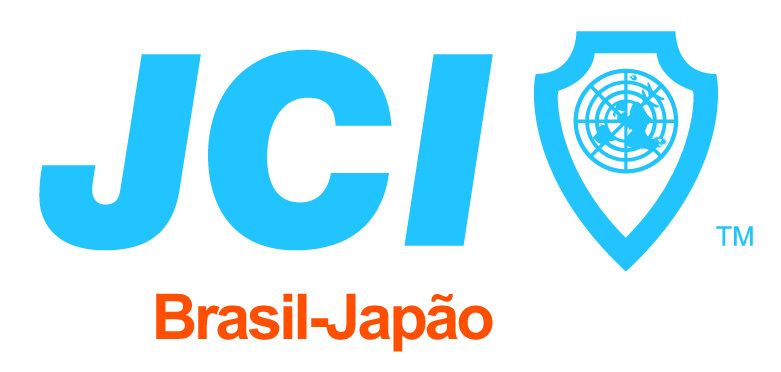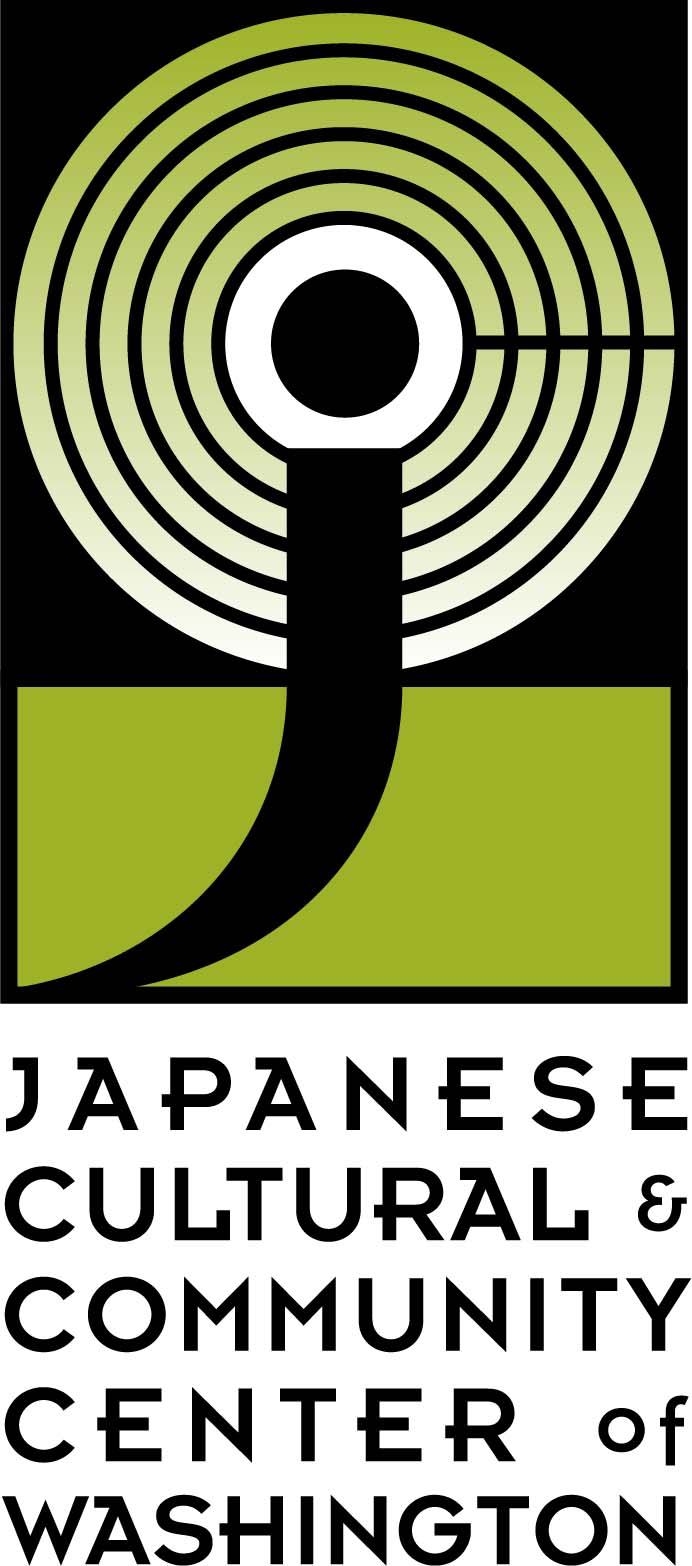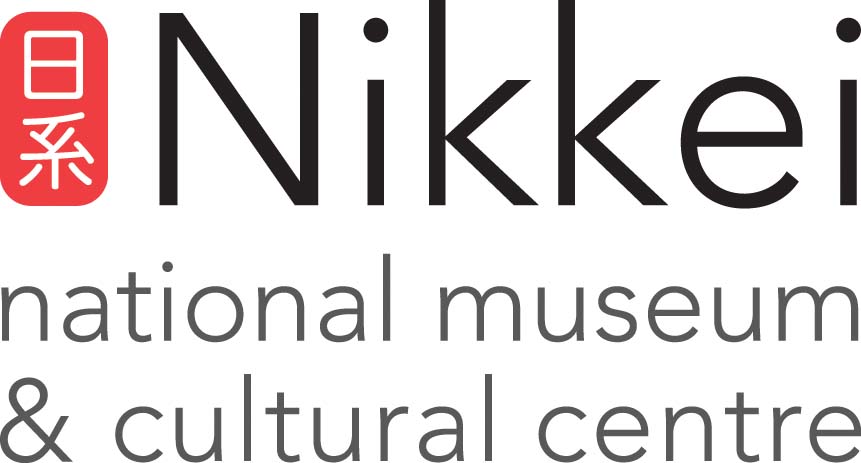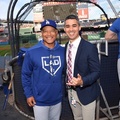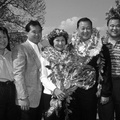Most people appreciate that anyone who works for a reputable nonprofit organization is unlikely to get rich. But the intangible rewards for those who feel the satisfaction of helping to fulfill a worthwhile mission often surpass the limited monetary compensation. And if you’re lucky, you might gain access to tangible benefits unique to the Japanese American nonprofit community.
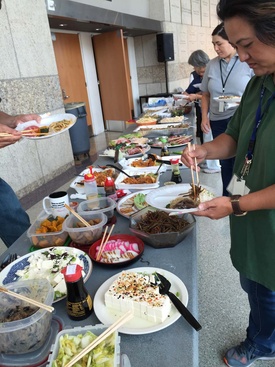
None of this would have happened without June Aochi Berk, who worked for many years as the executive assistant to Irene Hirano Inouye, JANM’s inaugural Executive Director and eventual President and CEO. And the sashimi component was impossible except for June’s husband Marty, who would venture out on deep sea fishing trips several times each summer.

June attributes her own fondness for family and community potluck meals from her childhood growing up in Little Tokyo. Her family was part of the Koyasan Buddhist Temple, which was originally located on Central Avenue, just north of the original Nishi Hongwanji Buddhist Temple building, which would become JANM’s first site in 1992. Her mother was the unofficial “head cook” for Koyasan during community functions. The other ladies in the kitchen would have June’s mother taste all the dishes and would adjust them accordingly.
Besides the abundance of good food, the gatherings at Koyasan also produced high spirits, which June recalls happily. “I remember seeing all the ladies talking and laughing and having a good time cooking for the people,” she explained. “Having the sashimi potluck lunches was a throwback to those happy days for us kids growing up in Little Tokyo.”
The second crucial element was Marty’s regular fishing trips during the summer. June revealed that since the 1960s, Marty had been part of a regular group of mostly doctors who annually set aside time from their practices to get on boats out of San Diego to search for tuna. Marty would often bring home more fish than his family could consume, so June would share his catch with community institutions like Union Church, Nishi, Higashi Honganji Buddhist Temple, and the Little Tokyo Senior Nutrition group.
When JANM moved into the renovated former Buddhist temple building, it presented a new outlet for Marty’s bountiful haul of fresh fish (June recalled one particularly successful excursion in which Marty ended up with 90 tuna). Helpfully, there were several individuals, including a Mr. Hirayama and his friends who helped out, who knew how to expertly cut up large fish like tuna. Once reduced to manageable portions, the fish could then be distributed to the Little Tokyo community.
The third essential component to the success of the sashimi lunches were the JANM volunteers, who openly embraced these potluck gatherings. According to June, volunteers such as Yae Aihara (kimpira gobo), Mary Karatsu (cabbage salad), Mary Karasawa (inari sushi with somen noodles), and Bill Shishima (maze gohan) always provided a nice variety of food to complement the sashimi. The side dishes weren’t confined to only Japanese food, as volunteers like Barbara Keimi would bring her tamale pie.
But the star of the meal was always the tuna and the objective was to highlight it. June said that volunteers like May Fujino and June Aoki contributed by buying and preparing the lettuce and radish (daikon) on which the sashimi would be displayed. Yoshiko Sakurai advised that the cut fish needed to be laid out to look like “ocean waves.” June added, “I even brought real dishes.”
What distinguished the JANM potlucks was the need to have multiple lunches to include all the loyal volunteers who would come in only once a week on a specific day, so June would help to organize four potlucks during the summer months (Tuesday–Friday since JANM was closed on Mondays). Every lunch would feature a series of different dishes. “Each day, whether it was the Tuesday group or the Wednesday volunteers, Thursday or Friday volunteers, it was all good,” June remembered. “So many delicious dishes too numerous to name.” The staff were invited to sashimi lunches on all four days, so that they could mingle with all the volunteers.
The sashimi potlucks also provided regular social settings for the staff, leadership, and volunteers to gather and bond. The paid staff, who originally was charged with bringing drinks, would regularly intermingle with the volunteers and occasionally a JANM Trustee or Governor would take part.
While some Japanese American families ate Japanese food regularly, many others did not and especially appreciated the potlucks. June explained that some of the staff would say to her, “This is like New Year’s gochiso! It wasn’t just the sashimi.”
Ultimately, June always harkens back to her mother’s generation who regularly prepared food for their friends and families. The food, whether it was fancy or simple, represented a feeling of community bonding together over a meal. “It’s the love, not the food, that made those days so wonderful and unforgettable,” June explained. Similarly, with the JANM sashimi lunches, “it was the love shown through all these wonderful cooks, volunteers and staff that made these potlucks fun and special.”
For the Japanese American National Museum, the sashimi potlucks represent the ultimate benefit.
© 2022 Chris Komai


